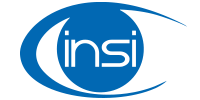- Blogs
- Tue Jul 19
Is an IT Distributed Workforce the New Norm in Atlanta GA?

IT Distributed Workforce has become more popular across the country. In the past, most companies have viewed the ability to work from home as a perk. But this view drastically changed after the Great Resignation. According to McKinsey management consulting company, more than 58% of companies currently offer a flexible workplace at least one day per week to attract top talent. And Ladders projects that 25% of all knowledge working in North America will work from home by the end of 2022.
Mass Exodus from Major Cities
Large cities with high taxes, spiraling regulations, increased violence, and homeless issues experienced a mass exodus during the pandemic. Instead, companies opted for a geographically dispersed workforce or more economically desirable areas like Atlanta, Austin, Raleigh, Orlando, or Boulder. Employees sought out the quiet suburbs and smaller towns where they could get more value for their money.
Pros and Cons of an IT Distributed Workforce
There are many benefits to an IT distributed workforce. The biggest reasons are:
- Lower overhead cost – includes everything from a physical workspace, to office costs like business phones, copier costs, office supplies, and meeting places.
- Eliminate Location Burden – companies can access a bigger talent pool while reducing payroll costs in less inflated labor markets.
- Flexible Benefits – employees will spend less gas money, have fewer traffic issues, have more time to take care of things at home, and have more time with family.
- Productivity Benefits – Studies show employees who work from home are more productive, report less absenteeism, and claim to be happier.
However, the drawbacks are mostly HR-related. Without workplace interaction, workers feel more alone and disconnected. This requires team activities, recognition, and communication.
Technology Required for an IT Distributed Workforce
In 2020 many companies were baptized by fire when it came to distributing their workforce. As a result, they learned how ill-equipped they actually were in transitioning to a remote plan. Those who were successful already had the following in place:
- Hosting – Companies that hosted their applications and infrastructure in the cloud were already prepared to allow remote access to employees. Subsequently, this is also true with software-as-a-service, wherein third-party application providers make their software available online.
- Virtual Desktops – Office 365 and Microsoft Teams allow users to access shared files, office applications, collaboration tools, and online storage.
- VoIP – Voice-over-Internet-Protocol (VoIP) is a central phone system in the cloud. It allows end-users to access their phone from anywhere and anytime.
- Web Conferencing Tools – Online video meetings and call conferencing allow end-users to connect with office staff, vendors, partners, and clients.
- Communication Applications – Allow end-users to collaborate through company chats.
- Security Software – A security program should meet the specific risks of end-user, industry, regulations, and sensitive data. For example, an executive would have many different needs than a telemarketer. Likewise, a healthcare company has different requirements than a plumbing company that takes credit cards. A SWOT analysis helps determine the security risks and gaps in the client’s network environment.
Technology Tools to Manage a Remote Workforce
There are also network technology tools and programs required to manage a remote workforce, including:
- Asset Tracking -allows you to track the movement and location of all your IT devices, equipment, and software within your IT environment. In addition, it will enable you to see the asset issue history as it changes hands. Subsequently, this will prevent employee theft and track your total cost of ownership (TCO).
- Desktop Monitoring – Desktop monitoring allows your IT team to monitor and remote into the desktop to fix issues. It protects against common hardware issues, prolongs the computer life cycle, and improves your ROI.
- Device Management Program – This program that keeps spare devices on hand if the end-user’s issues cannot be resolved remotely. Moreover, the replacement device becomes their permanent device. Subsequently, this allows the IT department to repair or deal with warranty issues before it is placed back into rotation.
Is an IT distributed workforce in your future?
The shift to a distributed workforce is a personal decision for each company. It is not just a technical question but rather personality and leadership question. INSI can help you with all your distributed workforce and IT Support needs. We offer both complete IT support packages for clients with no internal IT and a la carte customized packages for small IT departments. Most importantly, we only charge the client for the exact service and level they actually need.
Contact Innovative Network Systems, Inc. (INSI)
Someone will reach out to you soon!
We respect your privacy and will never spam or sell your information.


